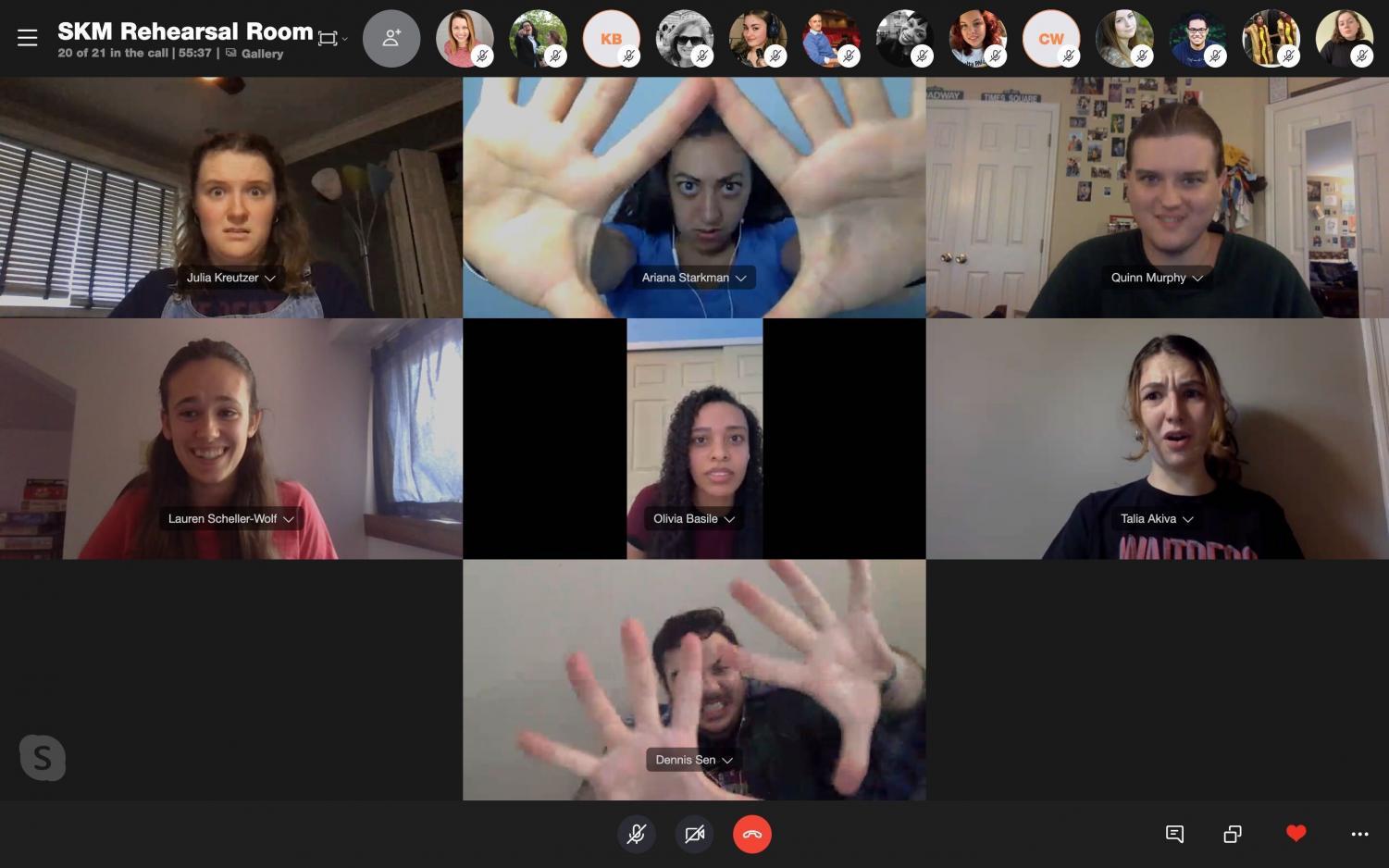Opinion | The importance of uplifting student artists during a pandemic


The cast of “She Kills Monsters” met over Skype to rehearse for its virtual July production.
As professional athletes retake the court, restaurants begin serving again and storefronts open their doors, many artists are wondering when their spaces will be allowed to follow suit. Unfortunately, the answer does not look promising.
Broadway is not set to turn its bright lights on again until 2021, leaving hundreds of thousands of actors, writers, producers, stage managers, designers, tech personnel and other theater professionals without steady means of income for at least another six months.
The prospect of entering artistic fields, which are being threatened like never before, is undoubtedly a daunting and disheartening reality for the hundreds of students studying theatre arts, studio arts, dance, music or other artistic fields at Pitt. Without serious support and ingenuity, these departments face dire financial, social and academic consequences. It’s on everyone — not just creatives themselves — to find innovative solutions to foster an industry that has been silently devastated by the pandemic.
Many students will have had some experience engaging with virtual learning, and the new Flex@Pitt teaching model is designed to avoid some of the struggles students faced when classes abruptly transitioned to virtual instruction as the pandemic overtook the United States in March. But this model, which offers both virtual and in-person instruction — if circumstances allow — is intrinsically better suited to some fields than others.
While large lectures that typically do not depend on student interaction can work through presentations via screen recording technology and asynchronous learning mediums, student artists and their faculty mentors must confront an especially difficult series of challenges.
How does a professor teach stage intimacy when it is unsafe to high five? How can one critique a painting’s fine detail from 6 feet away or through a computer screen? How can audiences or peers see an actor’s facial expressions through a mask? These are all problems without a clear solution, senior studio arts student Sean O’Brien noted.
“Whether it is for providing feedback or actively working on something together, we talk with our classmates every day in the studio,” O’Brien said. “The interactions don’t feel the same over an online forum or through a video chat.”
In many ways, these industries are being put between a rock and a hard place, or rather, a pebble and a hard place. Zoom classrooms and Skype performances are objectively incomparable and often less effective than in-person experience. On the other hand, it is egregiously dangerous to put students, faculty, audiences and professionals in close proximity to each other before it is deemed safe, even when other industries, like athletics and academic research, have phased plans to return.
With this in mind, many theaters, including Pitt’s Theatre Arts Department, are actively seeking out innovative solutions to sustain the industry during this unprecedented halt. In July, the department mounted its first virtual production, “She Kills Monsters: Virtual Realms,” where dozens of students, faculty and staff — myself included — worked in tandem to bring art to audiences watching from home.
I respect these artists’ willingness to resist the urge to do what is convenient and profitable for the sake of responsibility. In order to keep these programs alive, it is essential to support these creative solutions until it is safe to bring up the stage lights once again.
Like researchers and student athletes, artists are essential and influential members of our community. In planning our return to campus — whether it be in-person or on-screen — it is critical that we include creatives in our plan.
If you watched Hamilton on Disney+ in July, if music has helped get you through this unprecedented time, if your dorm is decorated with art or if you’re longing for a night at the theater, it’s time to bolster and value student artists when they need it most.
One of the best ways to do this is with your wallet. If you are able, make a donation to the theatre arts, studio arts, music and other departments housing student artists. Support their endeavors in taking their work online by attending livestreams or virtual productions.
Additionally, help creatives find work after graduating by supporting the industries that are struggling most. If you are unable to donate, sign petitions to help ensure artists whose income has been affected by COVID-19 are included in the life-saving relief packages. Meanwhile, artists can continue to put in the work.
Artists spend their lives fighting an often uphill battle to be remembered and valued. And in the midst of a pandemic, this fight is more important than ever.
Julia is a junior studying English writing, political science, and theatre arts. Write to Julia at JRK142@pitt.edu.
Recent Posts
Therese Pitman: Giving back to Pitt’s student-athletes with equality
Pitman is Pitt’s Director of Student Athlete Development where she helps student-athletes navigate their career…
Pitt speech and debate team heads to nationals
The William Pitt Debating Union, Pitt’s speech and debate team, sends students to both in-person…
Visuals: A Year in Review
The visuals desk had an interesting year. In the midst of the 2024 Presidential Election,…
De-stress events across campus offer students a break from studying
During finals week, departments across campus are offering wellness events to help students manage stress…
Pitt students share their summer plans
After a long and strenuous academic year, many students are excited to take a break.…
Column | Collaboration and connection make us better — yes, even in journalism
Today is the last day I will ever do this, and despite the amount of…

